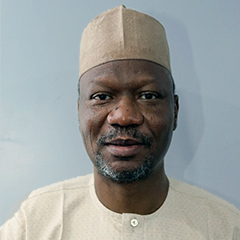Kole Shettima and Erin Sines, Co-Directors of On Nigeria, reflect on how to tell the story of anti-corruption successes, especially when success is defined by what did not happen.
We are a learning program, situated in a learning organization. That means that we and our partners are committed to defining what future success will look like—in our case, a more accountable and less corrupt Nigeria, where people have access to the goods and services to which they are entitled—and to articulating milestones that indicate we are on the right track.
Our team, like others at the Foundation, is reviewing our strategy, reflecting on what we have accomplished, revisiting our assumptions, and charting the path forward. An important part of the review is telling the story of what has gone well and what has not worked as well as we had hoped.
As part of the review, we carefully consider the strategy-level data collected by our evaluation and learning partner, EnCompass. Over the last month, we and the more than 80 On Nigeria grantees have been considering the implications of the most recent round of data and what it means for our next steps. Important concerns have arisen.
For example, we support efforts to strengthen transparency and accountability provisions of the Universal Basic Education Commission’s (UBEC) matching grant fund and the Home Grown School Feeding Program (HGSF), while also funding community groups to monitor the implementation of those two programs. The UBEC fund is a more mature program, established in 1999; HGSF is newer, launched in 2016 as part of the Social Investment Program.
So far, progress in UBEC has been about “rooting out” corruption, while HGSF’s progress has been about preventing corruption and keeping it from taking hold in the program. Although there are more corruption concerns in UBEC—perhaps unsurprisingly for a program that has been around for decades—the success stories include tangible, photo-worthy examples of formerly dilapidated schools with shiny new roofs, desks, and classrooms. Progress has been easy to see and explain.
From the beginning, the planners and implementers of HGSF “baked into” the program systems that make it harder to divert funds or resources, such as requirements that states must meet before rolling out the program, early publication of lunch menus, direct payment to cooks, and other corruption disruptors. While we are encouraged by the progress we see in the feeding program—there are systems, policies, and practices in place to prevent and deal with corruption; students are receiving meals; parents are satisfied—it is, in some ways, a harder story to tell in terms of anti-corruption successes.
How do you talk about what did not happen? Furthermore, we believe that it is important for people to see examples of anti-corruption successes in order to believe that it is possible to reduce corruption. But again, what is the narrative when a program is, for the most part, doing what it set out to do?
We are also grappling with scale and how to institutionalize both systems’ features that ensure transparency and accountability and that reduce the likelihood of corruption, as well as community monitoring activities. It is especially challenging to think about scaling and institutionalizing the monitoring. For example, our evaluation data show that the schools and communities where our monitoring grantees are working are, for the most part, receiving meals or services to which they are entitled. There are unintended benefits, too; for example, there is some evidence that teachers more regularly attend schools that are monitored by civil society groups. However, it will never be feasible for all schools to be monitored. No donor, civil society organization, or even government can cover that territory. How can we ensure that these policies and practices are enshrined so that they endure in the future?
Finally, we have been thinking about our goal and impact. As with all the Foundation’s Big Bets, we have an ambitious goal: to reduce corruption by supporting Nigerian-led efforts that strengthen accountability, transparency, and participation. We know that we cannot do this alone and that corruption will never be fully eliminated anywhere. But we strongly believe that we can be part of the ecosystem of individuals, government agencies, civil society organizations, journalists, media organizations, entertainers, faith leaders, community members, and others that work together to reduce corruption in Nigeria.
Our strategy has evolved as we have learned more about the ways that corruption is embedded in, and affected by, various facets of Nigerian society. But how much of a reduction is enough? How will we know when we have reached the tipping point and have contributed all that we can as a Foundation? How will we know when our work is done?
These are just some of the questions that we are wrestling with as we complete our strategy review. We look forward to sharing with you the outcomes of our review, including our next steps.
On Nigeria grantmaking ›
On Nigeria strategy ›
Other Directors' Reflections ›





